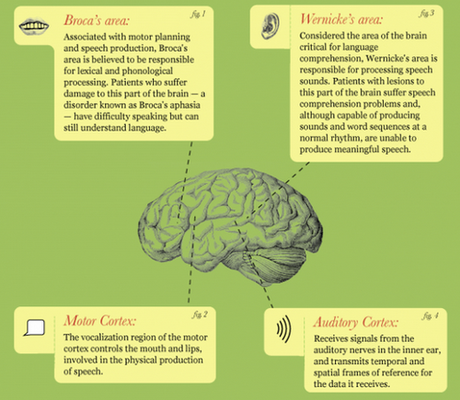
The illustration above provides an overview of how the different areas of your brain enable you to produce speech. When we talk, we select words that are translated into movements through the mouth, tongue, jaw, larynx, and other articulators. There are two major brain mechanisms that are responsible for language processing: Wernicke’s area, which controls the ability to process sounds associated with language (i.e. breaking down people’s sentences and analyzing them for inflection). Without this function, we wouldn’t be able to understand language, even if we could make the appropriate sounds. Broca’s area transforms thoughts into words (i.e. putting together sentences with proper syntax). Without Broca’s area, we would be able to understand language but unable to actually speak. Wernicke’s area and Broca’s area are linked by Geschwind’s territory, which has recently been found to play a pivotal role in language acquisition during childhood.
We know far less about language than other areas of the brain, since the difficulty in studying language is that it is so closely connected to thought. Language areas also appear to be a more malleable kind of brain mechanism, and take up different parts of the brain in different people.
(Source: visual.ly)
